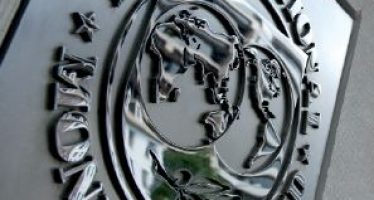The Role of the Chief Artificial Intelligence Officer (CAIO)
Embracing The Decade of Productivity
As we usher in the “decade of productivity” driven by advancements in artificial intelligence (AI), organisations face an imperative to accelerate their transformation journeys. The Chief Artificial Intelligence Officer (CAIO) emerges as a pivotal leader in this era, steering the enterprise through the complexities of AI integration and unlocking unprecedented levels of efficiency and innovation.

Author: Bashar Kilani
Leadership on Culture & People: Becoming an AI-First Organisation
One of the primary responsibilities of the CAIO is fostering a culture that embraces AI, promoting continuous learning and adaptation. This cultural shift is essential for organisations aiming to become AI-first. A focus on people is crucial; employees must understand and leverage AI tools to enhance their productivity and creativity. The CAIO should lead initiatives to reskill and upskill the workforce, aligning human talent with AI-driven opportunities. This involves not only training programs but also creating an environment where innovation is encouraged and AI solutions are readily adopted.
Accelerating the AI Transformation: The Path to Productivity
The CAIO is responsible for crafting and executing a robust AI strategy that aligns with organisational goals. This involves identifying processes for AI automation, areas where AI can augment human capabilities, and tasks AI can autonomously execute. Strategic foresight is needed to select and prioritise AI projects that deliver the highest impact. Navigating emerging cost and value dynamics is another critical aspect. A comprehensive understanding of the new cost structures introduced by AI technologies is vital. The CAIO must develop and communicate value creation models that illustrate how AI investments lead to tangible business outcomes. Balancing cost-efficiency with strategic investments in AI will drive sustainable growth, ensuring the organisation stays competitive in the rapidly evolving landscape.
Championing Responsible AI: Balancing Technology Advancements with Human Values
In the realm of AI, understanding and mitigating risks is paramount. The CAIO must oversee AI initiatives to ensure outputs are explainable, bias-free, and respectful of privacy and data policies. This involves rigorous oversight and adherence to ethical standards, ensuring AI applications are trustworthy and aligned with human values. Awareness and compliance with responsible AI legal frameworks from the United Nations, EU, and various U.S. bodies are crucial to maintaining regulatory alignment and public trust. The CAIO must stay abreast of these regulations and ensure the organisation’s AI initiatives comply with them, fostering a reputation for ethical AI use.
In Conclusion: A Catalyst for Transitioning from the “Industrial Revolution” to the “Intelligence Revolution”
As humanity transitions from the industrial revolution to the intelligence revolution, the role of the Chief AI Officer (CAIO) is pivotal. This era, marked by AI integration into all facets of business and society, demands the CAIO’s leadership to drive innovation and efficiency. The CAIO is crucial in fostering an AI-centric culture, managing risks, and ensuring ethical AI practices. They must balance technological advances with human values, ensuring AI augments human capabilities and operates transparently. The CAIO is not just a leader in technology but a catalyst for a broader transformation, guiding organisations through the profound changes brought by AI and ensuring these advancements benefit both the enterprise and society at large.
About the Author
Bashar Kilani
Digital Economy Advocate
Founder of AI360 Innovations, an advisory firm for the digital economy based in Dubai’s AI Campus. Bashar held leadership positions at Accenture & IBM in addition to several prestigious advisory Board Memberships focusing on the digital economy, responsible use of technology and accelerating sustainable transformation.
You may have an interest in also reading…
IMF on MENAP: Call for Focus on Job Creation
The near-term economic outlook for the Middle East, North Africa, Afghanistan, and Pakistan (MENAP) region has weakened. Difficult political transitions
IFC: Banking On Women – Changing the Face of the Global Economy
Women entrepreneurs are changing the face of the global economy, helping to sustain job creation and economic growth. While investors
Inclusive Markets Are Not Born: How UNCDF is Supporting Inclusive Digital Economies
Inclusive Markets Are Not Born: How UNCDF is Supporting Inclusive Digital Economies by Advancing the Right Policies and Regulations If



















































































